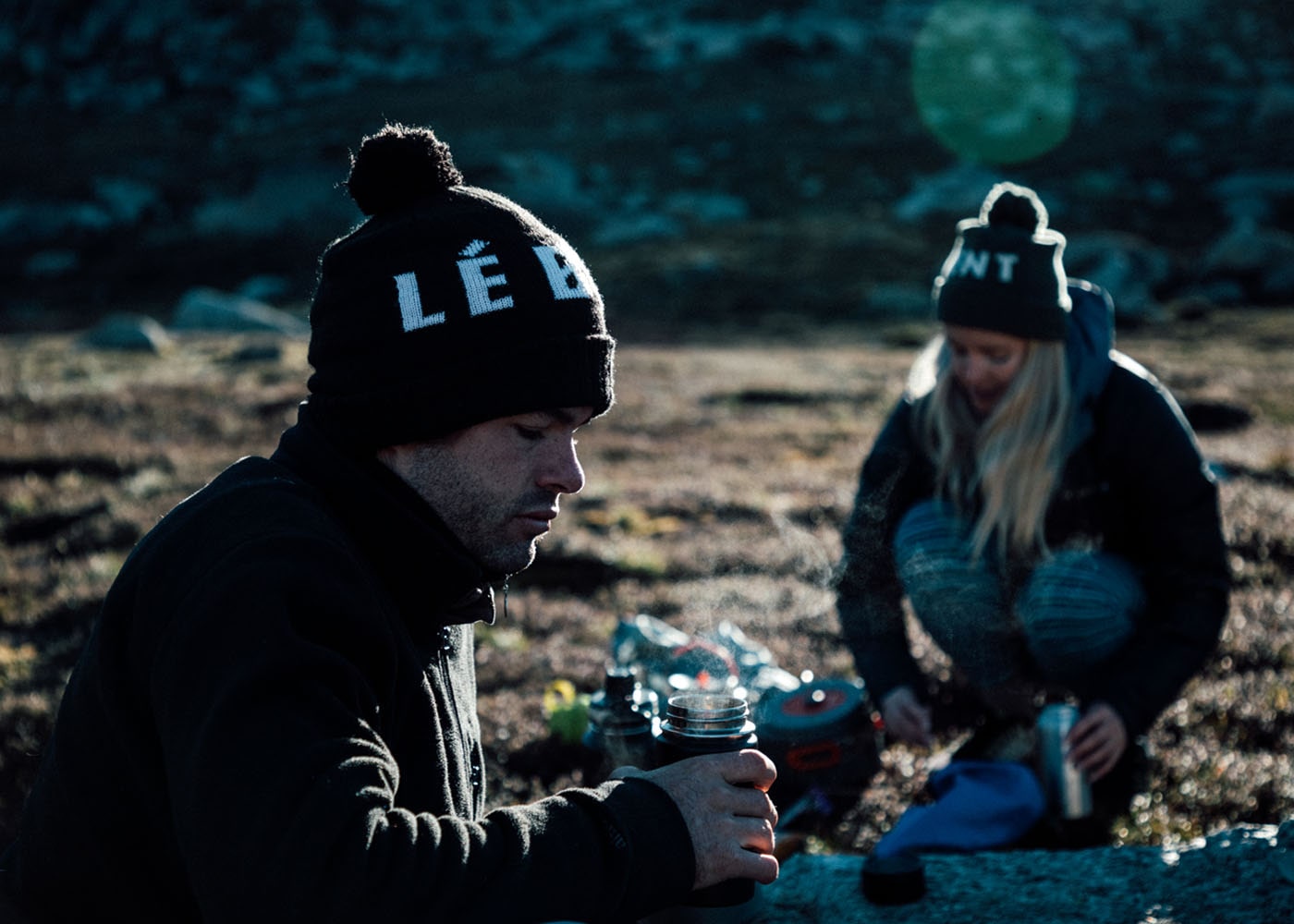When gearing up for a hike, nothing can dampen the mood more than being underprepared by wearing the wrong clothing. Depending on where you live or where you are hiking, you can encounter cold weather regardless of the season, and it can make your trip uncomfortable or cause a serious problem. To ensure a pleasant adventure and safe conditions, you need to invest in the best cold weather gear.

How to Dress for a Cold Weather Hike
Beyond investing in the right materials, there is a dressing method to regulate body temperature. Start by wearing a base layer underneath that wicks sweat off the skin. These can be made of synthetic or natural materials like merino wool.. You also want to make sure to wear a middle and outer layer.
The middle layer will insulate and help the body retain heat. Standard options include fleece or puffy down jackets. Lastly, the outer layer is designed to shield you from the wind, rain, or other elements. The same layering methodology applies to your bottom half as well.
Depending on how frigid it is, you can wear base layer bottoms, an insulated pair of pants like these .75 Merino Insulated Pants and then a waterproof shell pant over the top to keep you dry.
Purchase Proper Footwear
No one can enjoy a hike if their feet are not getting protection against harsh conditions. The best option in the rough wilderness that can provide good traction in rough or wet terrain is hiking boots. These should fit snugly around the heel and ankle, allowing you to wiggle your toes.
Your hiking footwear is only as good as the socks you pair them with, so be sure to invest in a proper pair of merino wool hiking socks or longer snow socks to keep you comfortable and blister free.

Important Accessories
When it comes to keeping yourself comfortable, there are so many other snow gear items that you can purchase. You can lose heat through the top of your head quicker than you might think, which is why these extra accessories can be just as crucial as your bigger items. Here are a few things to purchase:
Gloves
Neck gaiters
Hats or beanies
Lightweight gloves can be great to keep your hands warm. You can wear lightweight gloves on their own in milder conditions, or wear them under more insulated and waterproof snow gloves when going out in harsher conditionsTo keep your head warm, balaclavas and neck gaiters come in different thickness weights from 160gm to 260gm. Check out some men’s and women’s headwear and neckwear.

Take Breaks
Make sure you take time to build in breaks and prioritize staying hydrated. This is especially important while in cold weather because staying hydrated helps keep our body temperature at a normal level. When we lack fluid, it can drop to dangerous levels and cause hypothermia to happen quicker than average.
Canteens and reusable water bottles are great to take with you to stay replenished and are great to have in very cold conditions. In addition, vacuum-insulated bottles can allow you to pack hot tea or hot chocolate, which will go a long way to make you more comfortable.
Taking regular breaks to keep yourself warm, catch your breath, or eat a snack will help you recharge. This will help you be more alert and stay safer along your journey.
Tips and Tricks
Make sure you know your limits before you embark on a long and unfamiliar hike. Even with the best equipment, if you aren't prepared for harsh conditions, you could find yourself in a dangerous situation. Here are a few tips and tricks to follow when hiking in cold weather.
Let Others Know the Plan
Beyond doing things to prep along the way, like grabbing a compass and using road or trail maps, you must remember to let others know your plan and route. This can help alert the authorities or get help in the case of an emergency. Also, if someone doesn't hear back from you they will know that something may be wrong and they should check in on you.
Carry Extra Equipment
Make sure to carry a complete first aid kit so that you can be prepared if an injury happens. These can help with minor injuries or more serious issues like broken bones or blood loss. It can also be helpful to have a GPS device or cell phone that can signal off the grid.
Know The Signs
If you want to ensure that you are prepared, you should know the signs of frostbite and hypothermia. Frostbite is the freezing of tissue, most common in the fingers, toes, and ears. Signs of this include cold or numb skin, soft and frozen feeling skin, or any formation of blisters.
Hypothermia is when your body temperature drops to dangerously low levels, which can be life-threatening. Common signs are shivering, exhaustion, confusion, memory loss, drowsiness, or slowed speech. If you think you have the symptoms of hypothermia or frostbite, you should seek medical help immediately.
Purchase the Best Cold Weather Gear Today
When it comes to the best cold weather gear for extreme conditions, if you buy quality products and make sure to layer appropriately, you should start on the right foot. If you are looking for the best clothing products or hiking apparel, Lé Bent offers unrivaled comfort and performance.
Lé Bent is your go-to place for apparel, whether you are skiing the slopes or taking a brisk morning walk.













